There was a time when HP didn’t make desktop systems that didn’t have an Intel CPU at the heart of them. They were so dedicated to Intel that it even bought into the Itanium mess and amazingly managed to make money out of that.
But since the demise of the Intel Atom, low power performance platforms are more difficult to source. With a lack of credible Intel alternatives, HP has been turning to AMD and its Ryzen technology.
The new HP EliteDesk 705 G5 Desktop Mini is a classic example of the path that HP has now taken. It exclusively uses AMD technology to deliver a small but powerful PC that works with their HP Mini-in-One 24 Display to create affordable iMac-like systems.
On paper, the EliteDesk 705 G5 looks great, but is it as endearing when placed under the microscope?
Price
The review model (8RM51ET#ABU) is at the upper end of the specifications in this series, and with one of the better processors, it is priced accordingly. A typical UK cost for this specification is £479.99 inclusive of VAT, but it is possible to find it even cheaper.
This exact SKU isn’t available to US customers, but the similar specified 8MU10UT#ABA model costs $662.15 directly from HP. Those that want more RAM and storage from the outset could find them spending $879 on one.
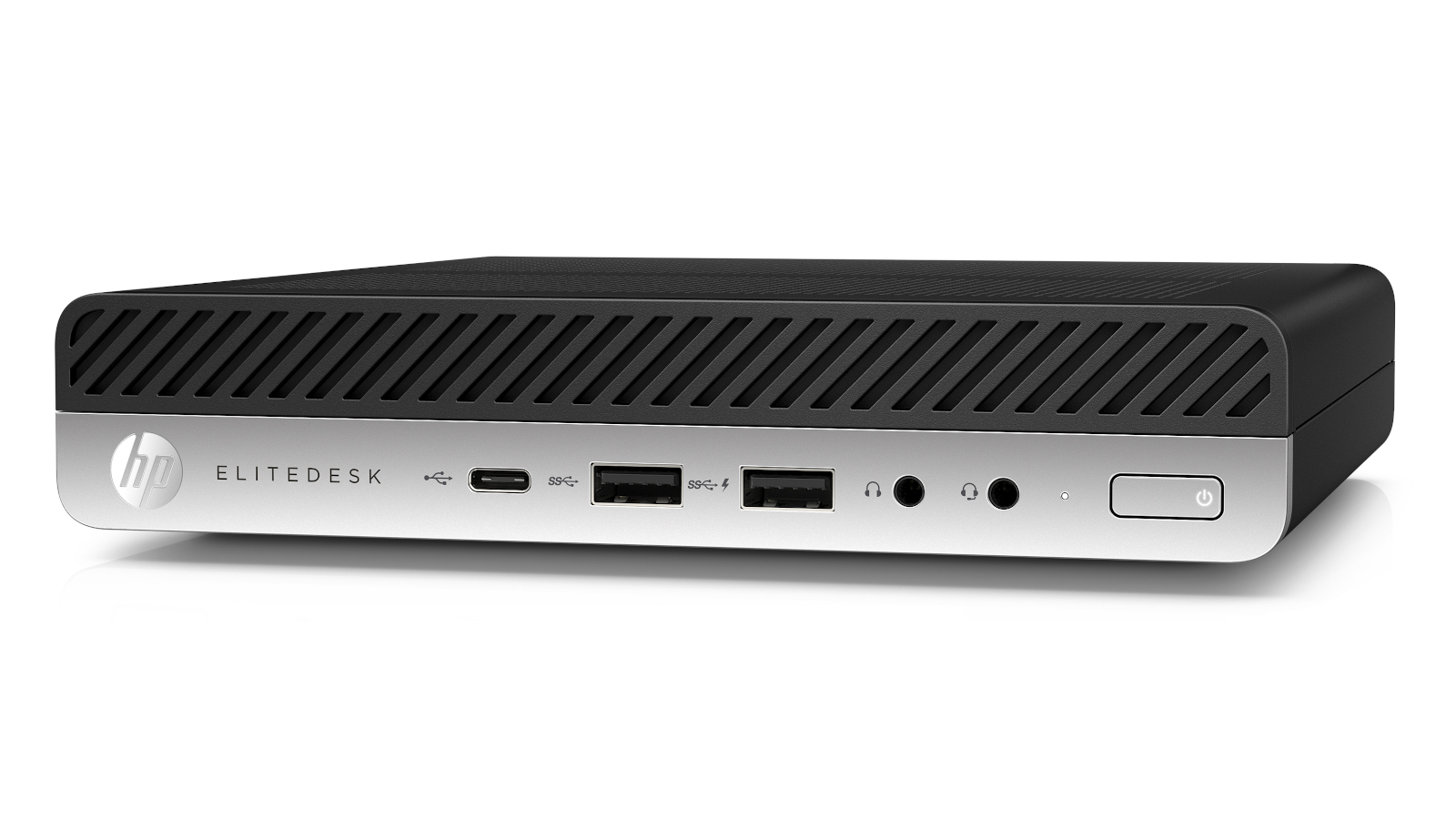
Design
Many Mini PC makers were lured into using the Intel NUC standards with all the limitations that tiny form factor brings with it.
The designers at HP instead went with a slightly bigger case and mainboard, allowing them a greater degree of flexibility about what hardware went inside, and the number of external ports.
The HP EliteDesk 705 G5 Desktop Mini ended up as a square-ish box that is 177mm wide and long and only 34 mm high. The sides and back are metal with the front facia being plastic. This shape gives the user the option to lay it flat, mount it vertically in an included stand, or potentially attach it to a monitor stand using the VESA mounting holes on the bottom.
That last feature is a bit odd, to our thinking. Because what most people like to do with these devices is to attach them to the rear of a monitor using VESA. But, as you can’t easily send a threaded rod into both the monitor and the G5 at the same time, without some additional mounting hardware, that option isn’t possible.
The HP Mini-in-One 24 Display has this, but that's an expensive way to solve it.
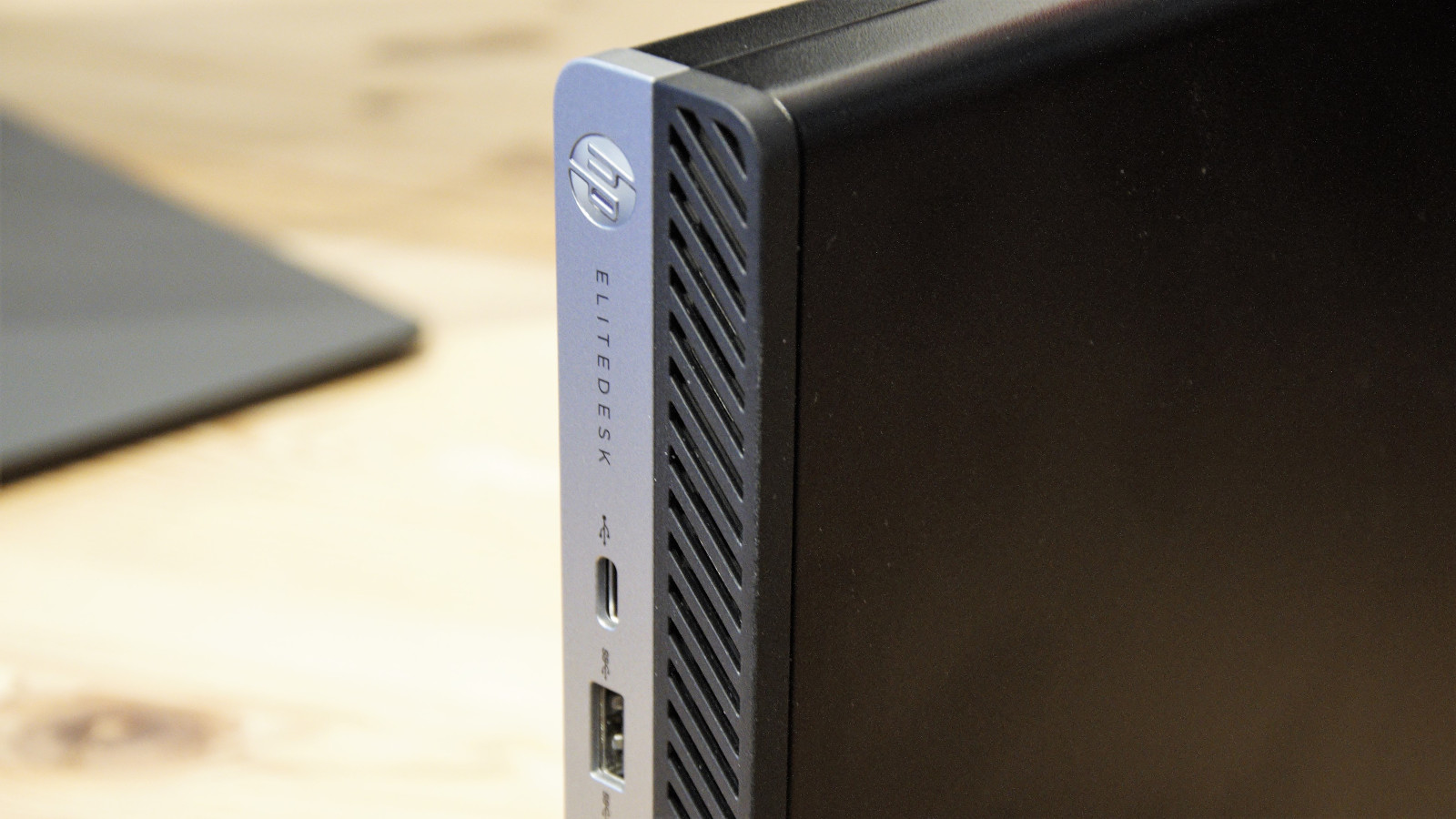
Whatever way you choose to orientate it, there are plenty of USB ports on the front and rear, including a USB-C port that can be used to charge a laptop or for connecting a fast USB 3.2 Gen 2 storage device.
Internal access is via a captured thumbscrew on the rear that releases one whole side and reveals the inner workings of the G5. As you might imagine, it is cramped inside.
But, the designers still managed to find space for an unfilled SODIMM RAM slot and a 2.5-inch SATA drive bay. It is possible to get to both SODIMM slots and the M.2 drive to upgrade them, although this involves dismantling the components that sit over the top of them.
It isn’t as straightforward as an upgrade might be on a desktop system, but it is possible to boost this system to substantially more storage and RAM than comes out of the box.
Overall, the aesthetics here are relatively bland, but the G5 has a sturdy construction that infers it should last more than a couple of years of use if not excessively abused.
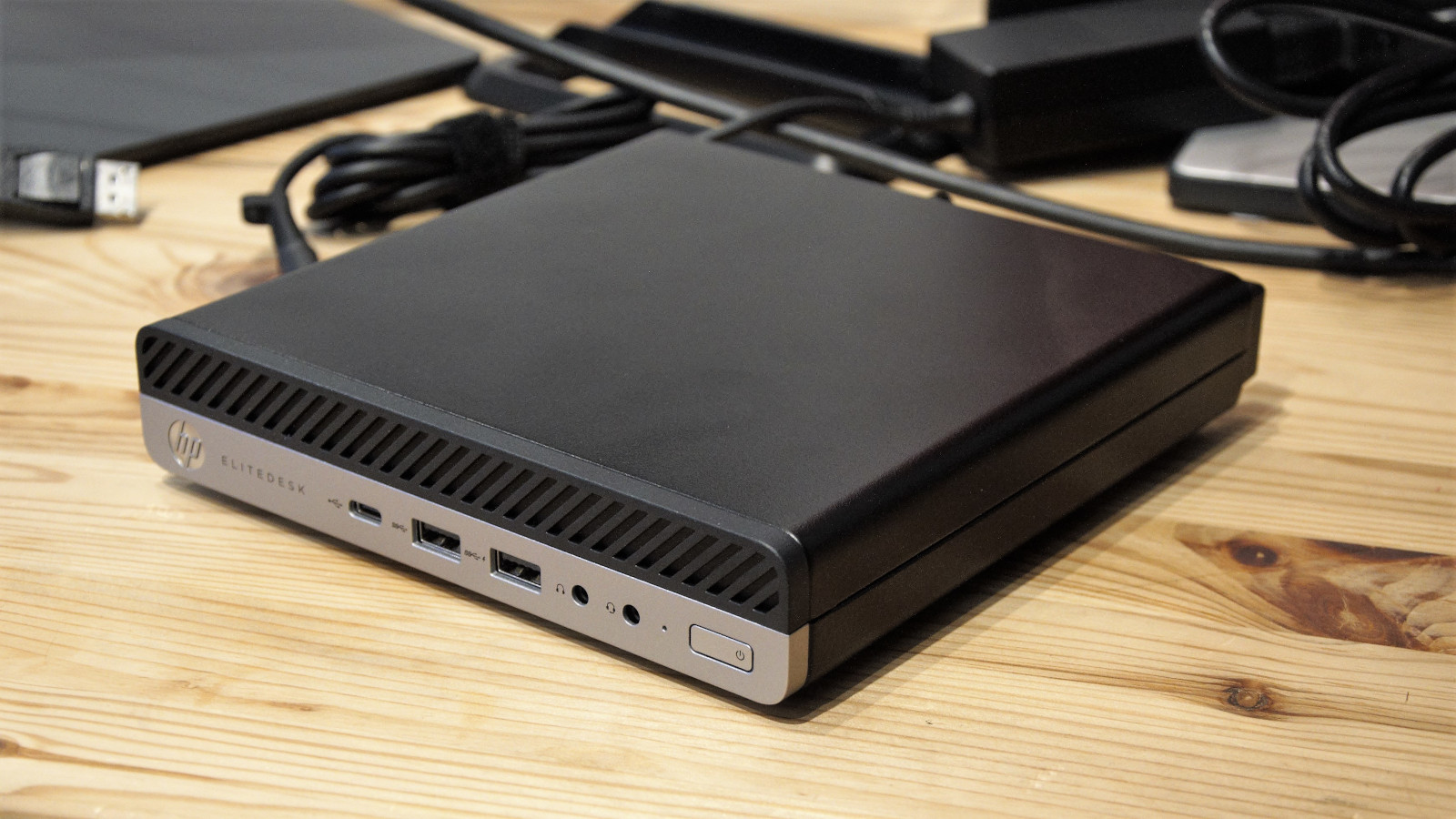
Hardware
Spec Sheet
The HP EliteDesk 705 G5 that was sent to TechRadar Pro for review:
CPU: AMD Ryzen 5 Pro 3400GE
Chipset: AMD PRO 560 FCH
Graphics: AMD Radeon Vega 11
RAM: 8GB LPDDR4 RAM (SK Hynix DDR4 @ 2,660 MHz)
Video outputs: 2x DisplayPort
Storage: 256 GB WDC PC SN720
Ports: 5 x USB 3.1 Gen 1, 1x USB-C 3.1 Gen 2 (charging), 2x DisplayPort, 1x 3.5mm headphone audio jack, 1x 3.5mm microphone
Connectivity: 1Gbit Ethernet, Wi-Fi 802.11 a/b/g/n/ac, 2.4 GHz and 5 GHz (2x2 MIMO)
Weight: 1.26 kg
Size: 177 x 177 x 34 mm (W x D x H)
Warranty: 3 years
Part No.: 8RM51ET#ABU
Often Mini PCs end up with old mobile technology in them, but the 705 G5 has a processor that was specifically designed for desktop PCs by AMD.
All configurations use the AMD Pro 560 chipset, and depending the model has an Athlon Pro, Ryzen 3 or 5 series APU. The Ryzen APU is relatively new silicon that first appeared in the middle of 2019 as part of a more sweeping upgrade of AMD Ryzen chips.
These chips are a revamp of the previous Picasso microarchitecture now scaled to 12nm and given a modest clock boost when it was shifted to the Zen+ core.
Because the entry-level Athlon is only a Zen dual-core design, we’d avoid that one.
The more powerful APUs available consume 65 watts and the lower-powered ones 35 watts, and they come with either Vega 3, 8 or 11 GPU options depending on the series.
Our review hardware came with the Ryzen 5 Pro 3400GE processor empowering it with the best Vega 11 graphics, four cores (8 threads) and a base clock of 3.7Ghz that boosts to 4.2GHz if a single thread requires it.
For such a small machine this is a powerhouse processor that easily betters the Intel Core i5-9500T in simultaneous threads, the speed of RAM it supports and performance across a slew of benchmarks.
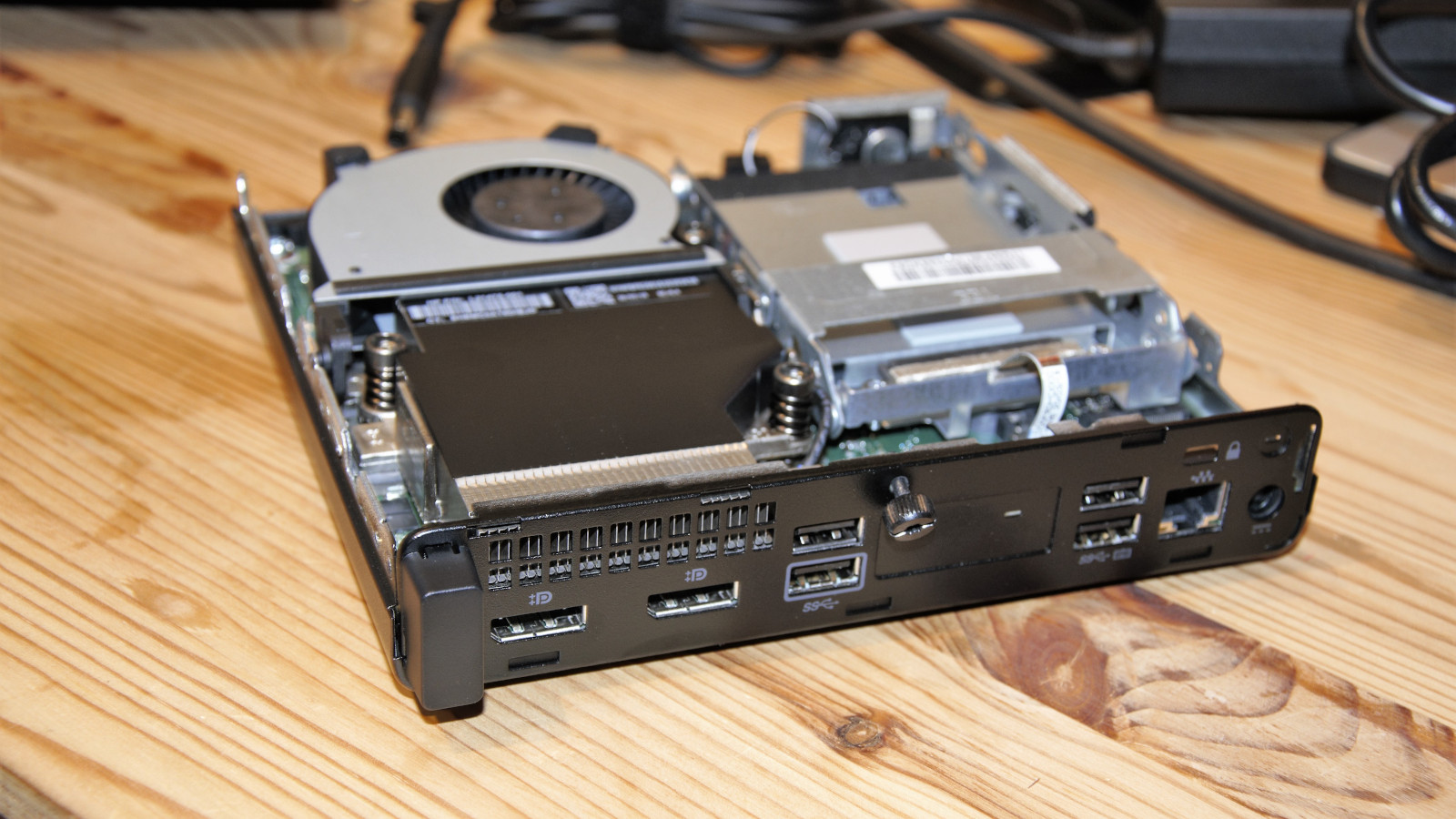
Our only reservation about it is that in this enclosure, when working hard, the amount of heat it generates can cause the case to get distinctly warm, even with the fan working at full speed.
Most users won’t spend their working day continuously benchmarking, and under less stress, it doesn’t make as much heat.
Other than the system and power supply, HP provides some extra equipment in the box that we need to talk about.
As part of the package you get an HP USB Business Slim Keyboard and HP USB Optical Mouse, and these aren’t anything we’d like to use for a full working day.
They make better options that you can add to the order, but neither of these items is appropriate for those that spend long periods at the computer.
And, the final item is a plastic foot that is meant to hold the G5 up vertically. The tolerances on this item are very poor, impacting how it grips the computer. As a result, it invariably leans one way or the other.
We’d guess that most users would try standing the machine up using the foot, find it didn’t work well enough, and revert to laying the machine flat.
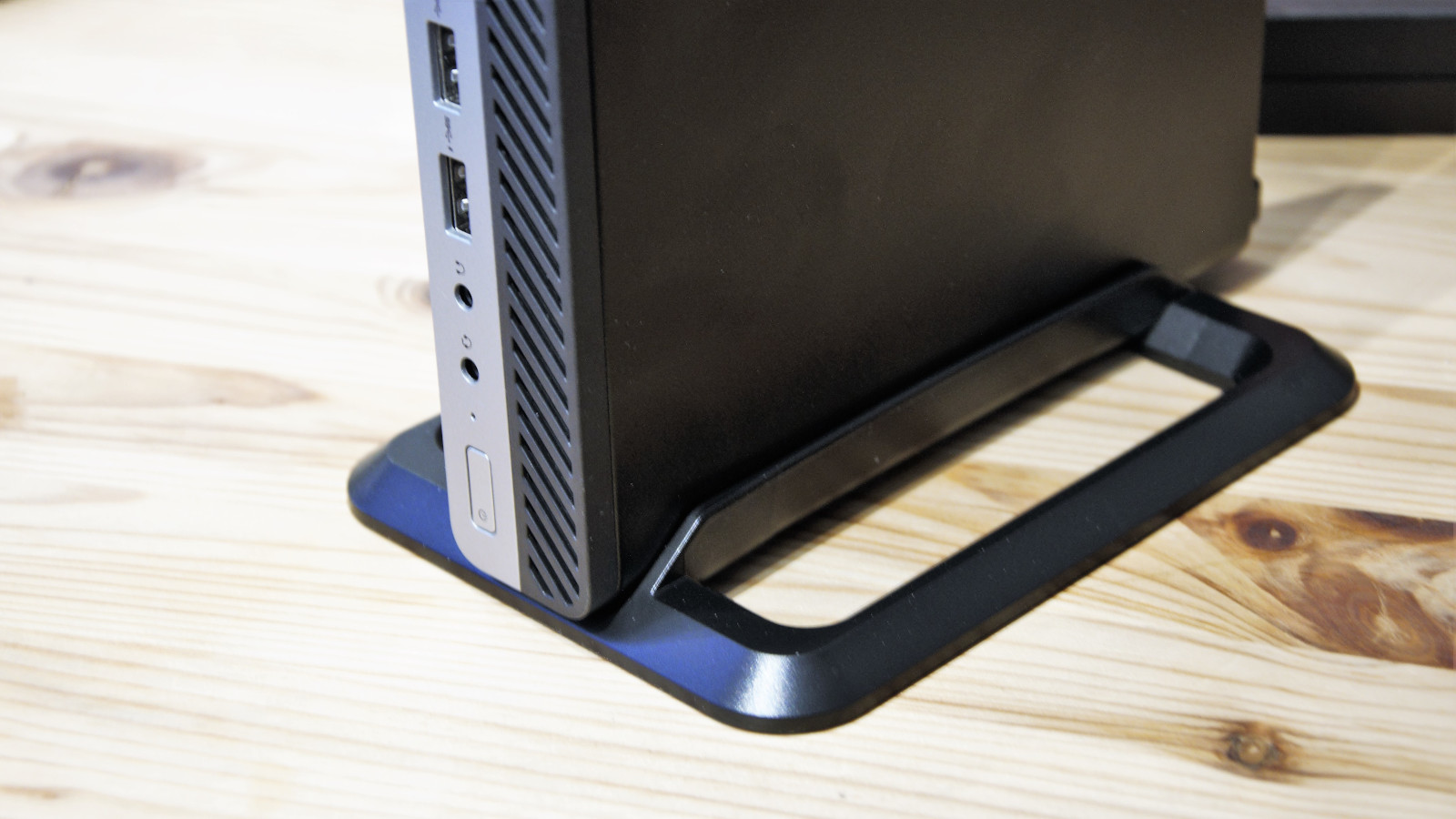
In use
The G5 is a remarkably simple machine to connect and get operational, as it has most of the connectivity of a desktop system but is the size of a book. Unless you are looking to add discrete video hardware or other card-based technology, this machine is a functional equivalent to any modern desktop system.
And, the inclusion of a USB-C Gen 2 port provides an extra feature that some users might not be aware; a third video output.
The Vega 11 GPU hasn’t the power to drive three displays for gaming, but it has sufficient throughput to make this scenario workable for browsing and applications.
Benchmarks
Here’s how the HP EliteDesk 705 G5 Desktop Mini performed in our suite of benchmark tests:
3DMark Sky Diver: 6,298; Fire Strike: 1,482; Time Spy: 758
Passmark: 2934.8
Passmark CPU: 8433,6
PCMark08 Home: 3557
CPU-Z: 420 (single-thread); 2108 (multi-thread)
Geekbench: 879 (single-core); 2821 (multi-core); 9831 (compute)
CrystalDiskMark: 3094MBps (read); 1608MBps (write)
Cinebench CPU: 1595
Novabench: 1523
Atto: 3071MBps (read, 256mb); 1594MBps (write, 256mb)
Windows Experience Index: 6.2
What’s interesting to compare the video capabilities of this platform and how they compare to Intel’s ancient Intel UHD Graphics solution.
The 3DMark Sky Diver benchmark on a Core-i5-8365U processor gets a score of just 4,623, well below the 6,298 that this machine can achieve.
Looking back through our tests, it takes the Intel Iris Pro Graphics 6200 GPU running on an old Intel Core i7 processor to match the Ryzen 5 Pro 3400GE.
In a comparison with the Intel processors that are generally used in NUC mini-systems, this platform is superior in almost every respect.
But we should also mention that our benchmark scores, in general, weren’t massively more than we saw from the TBao MN25 mini PC workstation that uses the Ryzen 5 2500U CPU and has only the Vega 8 specification GPU.
Where the G5 wins is that it has a much faster NVMe drive in both reading and writing, translating into rapid boot times and applications launching.
The competition
There are cheaper options available, like the TBao MN25 we’ve covered previously that also uses the Ryzen architecture.
But without doubt, the biggest competitor that faces this kit is also from HP; the EliteDesk 705 G4 that we reviewed back in 2018. As this is a mature design HP has a large number of G4 models, some with discrete GPUs. G4 designs using the AMD Ryzen 5 2400G can be found for slightly less than this hardware.
Those that go searching for mini-systems will undoubtedly find many cheaper devices based on the Intel Celeron J4115, but they are far inferior to this platform and not remotely comparable.
In the same price range is several machines that use the Core i7-8565U and the i7-7820HK, but it is worth noting that these are laptop CPUs and not desktop processors like the Ryzen.
Above the cost of the G5 are the machines, like Intel’s own NUC and the MSI Cubi 5 10M, that use the Intel i7-10710U CPU, another laptop processor. In our benchmarking this chip still isn’t a serious competitor for the Ryzen 5, amazingly.
What’s disconcerting is that there are plenty of budget gaming PCs that use the same Ryzen 5 CPU that can be bought for around $400, some with more RAM and storage. These are in tower cases, not tiny enclosures, revealing a high premium for the miniature engineering.
It is hard not to conclude that if you want a branded mini PC, then even if the G5 seems priced high for what is inside, you have limited alternatives to it.
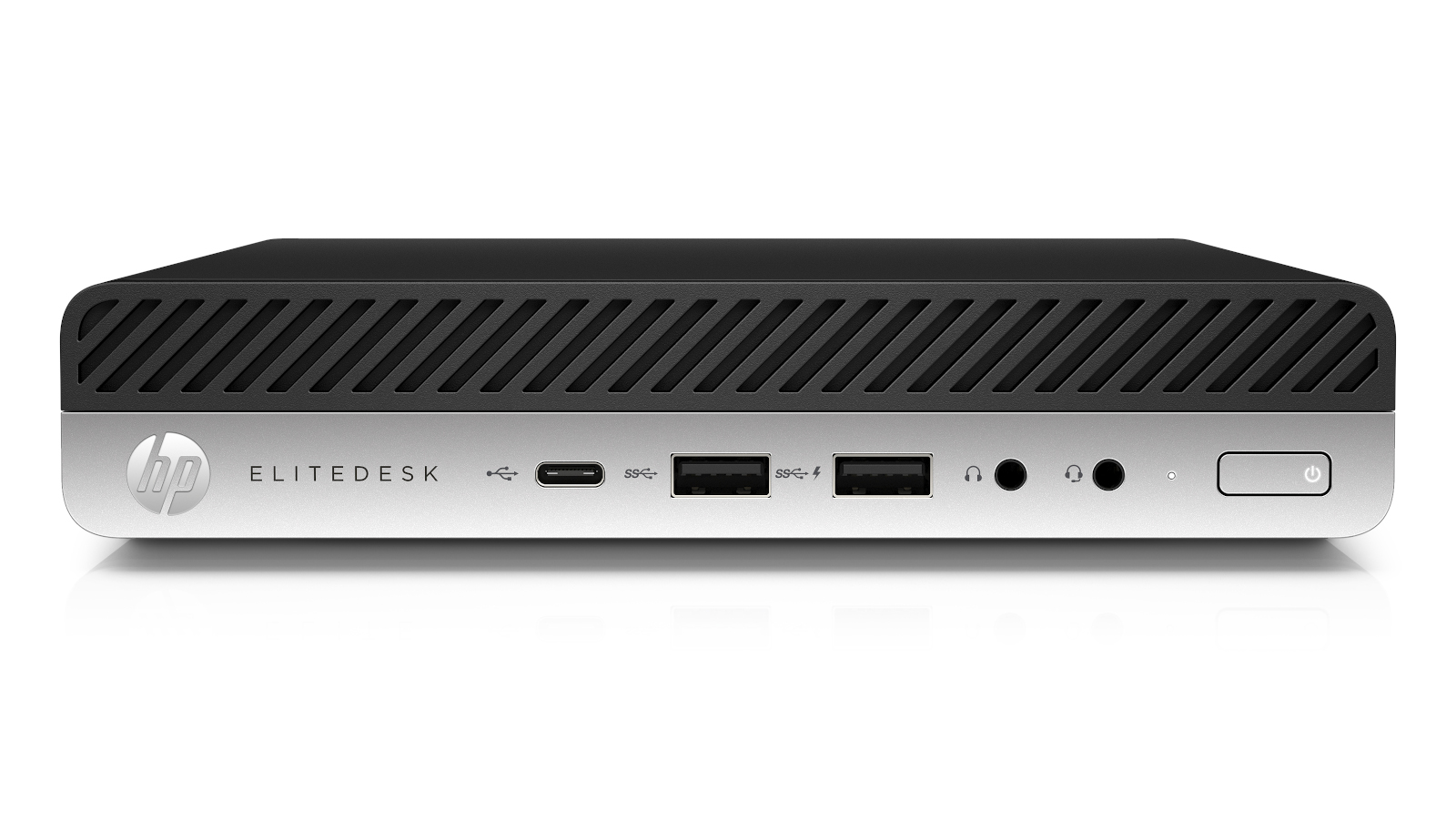
Final verdict
The HP EliteDesk 705 Desktop Mini distils what most desktop computer users need for typical office work into a refined and elegant solution that has plenty of performance and connectivity to offer.
Even if located on the desk, its small enough that the space it occupies is negligible and the noise it generates won’t be apparent on the other end of that critical conference call.
Our only concern about this product is the price. We’ve seen other Ryzen-based Mini PCs recently that offered similar levels of performance and flexibility but at nearly half the cost.
However, they mostly come from brands that aren’t well established, and understandably business buyers will lean towards suppliers that have a reputation to uphold.
- We've also highlighted the best thin clients
from TechRadar - All the latest technology news https://ift.tt/34G1ln6
via IFTTT


0 التعليقات: